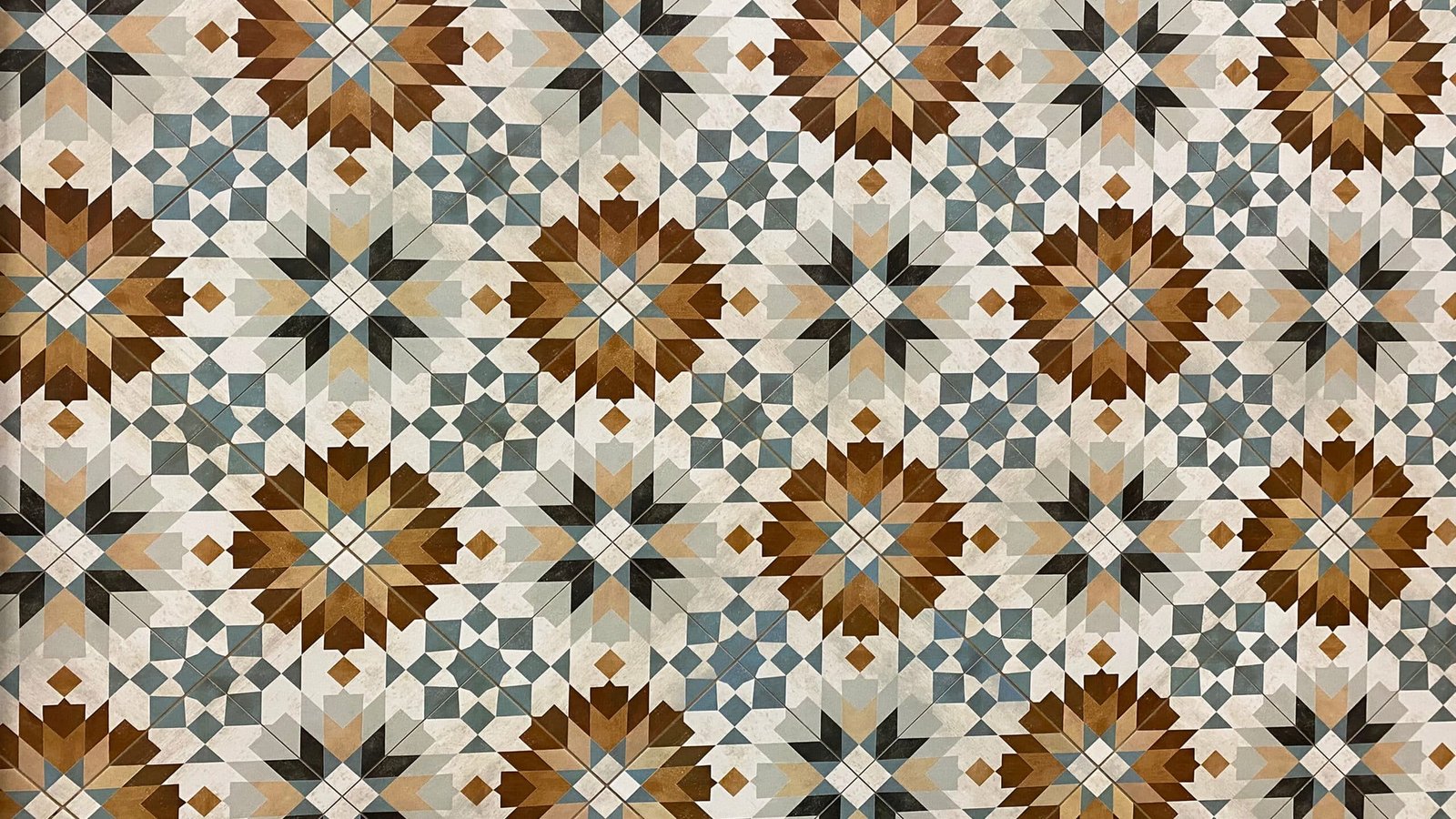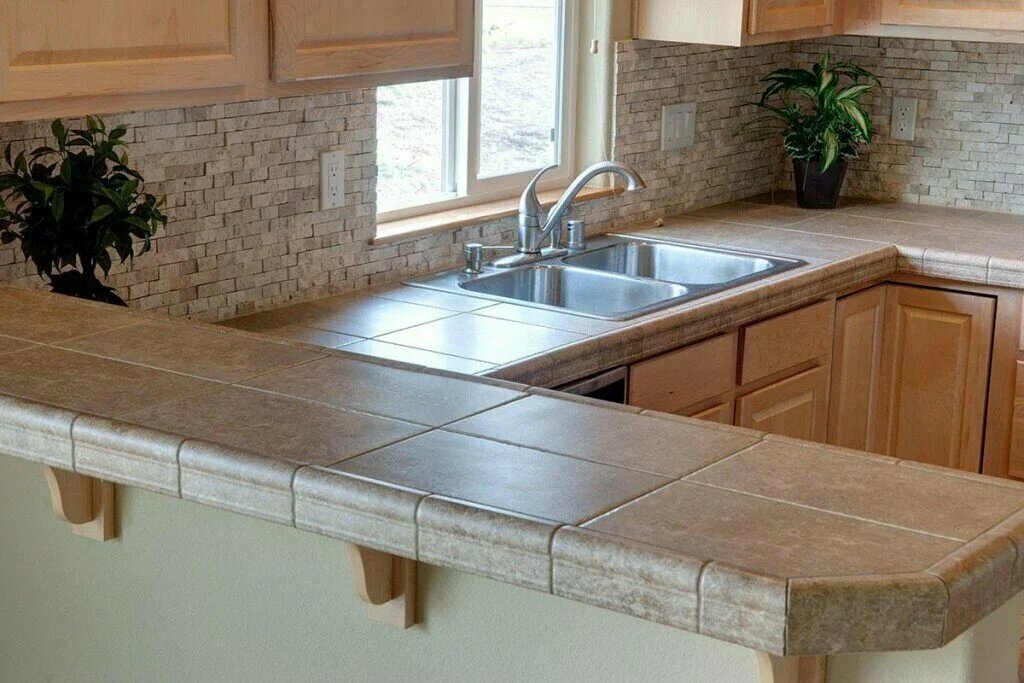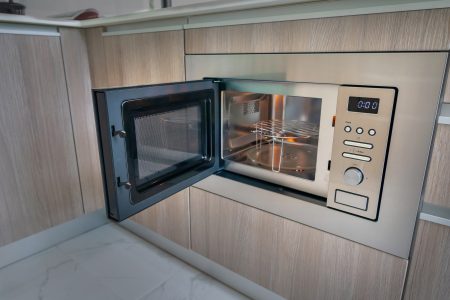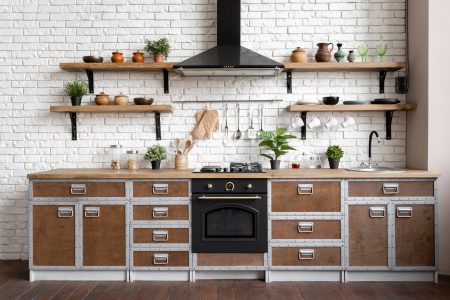If you want to update your kitchen and give it a stylish and fresh look, try to paint the tile kitchen countertop. Most people cannot determine whether to invest in a new countertop or not and if paint tile countertops are worth it.
Considering costs and other factors that are part and parcel of full-fledged kitchen renovation, updating the countertop is a better way to transform your kitchen for the better. Painting kitchen countertops is a viable option as you get a cleaner, smoother surface to work, and the overall appearance gets revamped under a budget.
How To Paint Kitchen Tile Countertop?
To paint tile, you first need to collect the materials and tools you will need. If you have to paint ceramic tile, you will require the following things:
- Tinted acrylic paint primer
- Acrylic semi-gloss interior paint
- Urethane
- Rubber gloves
- A heavy-duty cleaner
- Denatured alcohol
- Scrubber
- Sponge
- Some painter’s tape
- 220 grit sandpaper
- A couple of rags
- Paintbrush for edges
- Paint roller with lint-free and short-nap roller cover
- A paint roller tray
- Artist’s brush for painting the grout lines
Selecting the Color and Type of Paint
If you have a ceramic countertop, any color of paint will be good. You can easily custom-match the color of your countertop to suit the overall theme of the kitchen or any particular element in the room. The best paint option would be a 100% acrylic semi-gloss primer and paint. To paint tile, you should only invest in top-quality materials.
The primer and paint have to be thinned slightly. Apply several thin layers of the paint instead of one thick layer. Also, use brushes for cutting in the edges and use a lint-free, low-nap roller for rolling the paint on the tile’s surface.
If you are looking for a more realistic look, try using an artist’s brush to paint the grout lines in any contrasting shade. This should be done after the final field coat has thoroughly dried. While painting the grout lines, you may use a straightedge to guide your brush.
Preparing to Paint Tile
Preparation is the key to a successful paint job and good results, particularly with ceramic tiles. Use drop cloths to cover the nearby surfaces that do not require painting. Also, you can use painter’s tape to mask off the surface and protect the surrounding walls.
If you see any cracks or imperfections in the tile or grout, patch it first and then proceed to the next step. If the grout is cracked or broken, you should remove it and replace it with a newer one. Broken tiles will have to be replaced before painting. If you performed any repair, let it dry for at least 48 hours before painting.
Preparing Tile Surfaces for Painting: Sanding and Cleaning Guide
For scrubbing and scuffing away dirt, debris, grease, or mildew growth, use 220 grit sandpaper. Sanding is vital to break the tile’s gloss and create a cleaner and drier surface so that the new paint could stick to it well.
However, please avoid sanding the tile too harshly, as it can cause scratches and damage the tile. After painting, these scratches will become more prominent and will ruin the impact. After sanding, wipe off all the dust and clean the surrounding area.
Using a heavy-duty cleaner, wash the surface thoroughly using a sponge. Let the cleaner sit on the tile surface for at least 2 minutes to remove soap scum or hard water deposits. Now clean the area using a cleaning pad. Allow it to dry completely before priming.
Priming the Surfaces
A primer is essential if you want good results from your paint job. Thin the primer coat slightly to create a smoother coat without any unwanted bumps or thick spots. Use a paintbrush to cut in the primer along the countertop’s edges, such as around baseboards, walls, cabinets, and appliances.
You can use a short-nap roller for applying the primer. Be careful, though, and don’t push too hard. Roll it in all directions to keep the surface smooth. Let the first primer coat dry for several hours before proceeding to the second coat and leave it to dry overnight.
Applying Paint
Follow the same method as you used for the primer. Thin the paint slightly, and apply it in smooth, multi-directional coats. Use a paintbrush to cut the first coat’s edges and apply a thin coat of finish paint using a roller. Allow it to dry completely before repeating the process for a second coat.
After the second coat is dry, inspect the paint kitchen tile countertop. If you deem it necessary, apply a third coat; otherwise, let it dry. You can paint the grout lines using a contrasting color and an artist’s paintbrush.
Apply the urethane sealant after the paint is dry.
Avoid touching the surface for at least two weeks as the paint will take some time to get fully dry and harden.
Which Tile Paint is Best?
Flat Latex Paint:
It is one of the best options for you for a variety of countertop materials, including ceramic. It is available in a wide range of colors, from slate gray to forest green.
Latex is a versatile tile paint, so you can paint your kitchen countertop in different ways to suit the kitchen style. Whether the kitchen is rustic or modern or features a sustainable design, latex paint will suit the countertop always.
Moreover, you can try different color combos. So if you have an all-white kitchen, try painting your countertop in bright red or vice versa.
Stone Textured Paint:
Another good option is stone textured paints. This is a unique option when painting kitchen countertops. However, stone-textured paints can completely transform your countertop.
It is a good choice if you have damaged or outdated laminate countertops. At a fraction of the replacement cost, you can create an elegant new countertop simply using textured stone paint. You can choose between five different colors, and it withstands daily use, wear, and tear.

How To Paint Kitchen Marble Countertop?
Preparing The Tile Kitchen Countertop
Just like it goes for any other countertop surface, to paint a marble countertop, you have to prepare the surface first. Clean the surface thoroughly using a mix of ½ gallon of hot water and ½ cup of ammonia. Now add ¼ cup of vinegar and ¼ cup of baking soda. Use this mixture to remove the layers of dirt from the countertop surface.
Sanding
After cleaning, allow the countertop to dry before starting the sanding process. To scrub off any remaining dirt and remove the gloss, use fine-grit sandpaper. Scrub in gentle strokes and smoothen any divots or scratches you have seen.
For more significant gouges, use acrylic resin epoxy, let it dry, and sand to blend them with the countertop. Clean the area again before applying paint.
Painting Marble Countertops
You can use a paint kit to paint cultured marble or give the marble countertop a granite-like look. Such kits are easy to use and come with all the necessary materials and instructions. You can even create a veined look to make your marble countertop appear like granite.
For painting a marble countertop, you will follow a procedure similar to that used for other countertop materials. Roll on a primer first on a clean and dry countertop. For marble countertops, oil-based paint will prove to be more durable and long-lasting. Apply the first coat and let it dry overnight before applying the second coat of paint.
You can use the edge or feather of a thin paintbrush to run over countertop lines. Please don’t make them too even, and space them at least three to six inches apart to create a natural look.
After you have applied the paint and it has dried completely, apply two coats of acrylic sealant.
Can You Paint A Ceramic Kitchen Countertop?
Ceramic tile is a building material. It is made from clay molded into tiles. The surface is burned to make it harder and sturdier. Generally, glazed ceramic tiles are used for kitchen countertops. Porcelain is a particular type of ceramic tiles made from more refined clays burned under higher temperatures. This is a much more complicated and more durable tile material.
Painting ceramic countertops are different from other materials because glazed ceramic tiles’ shiny surface doesn’t bond well to the paint. Therefore, you must sand and scuff the characters well to let the paint stick to the surface.
How To Paint Tile To Look Like Concrete?
To paint tile so that it looks like concrete, your best option if using chalk paint. The process of painting the countertop is more or less the same as for other materials. You will have to wash the tile thoroughly and then, using fine-grit sandpaper, smoothen the surface. An additional step is to de-gloss the tile to create a drier, concrete-like appearance.
Start painting the tile with a base color, such as chalk paint in gray. Start from the furthest point and paint the surface using a good quality paintbrush so that it won’t shed its bristles. Paint all the grout lines around the tiles and fill in the tile with the brush. You can apply from one to three coats depending on the type of countertop you have.
Once the base coat has dried, using a foam roller, apply a thin coat of paint all over the surface. After the paint is dry, apply the sealer. Never use an oil-based sealant on concrete finish tiles as it will create a glossy look, which you need to avoid. Use a water-based adhesive that will give a rough and drier finish.
Can You Use Spray Paint On Tiles?
Yes, you can spray paint tile on your kitchen countertop. Follow the same procedure to spray paint the kitchen tile countertop. First, clean the surface and use sandpaper to remove any traces of dirt/debris or unevenness.
Cover anything that doesn’t need to be painted with thick plastic sheets because spray paint can travel everywhere.
Keep the spray paint bottle at least 8 inches away from the surface, and first spray it lightly. Let it dry for two hours, and then apply another coat. Do not spray too much and keep the coat light but thorough.
After the paint is dry, apply polyurethane to seal the paint and create a finished look.




